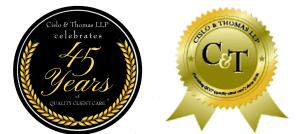The private Internet Corporation for Assigned Names and Numbers (ICANN), which manages domain names worldwide, continues to register generic top-level domains, yet many businesses may be unprepared for the impact this could have on their brand. Internet addresses are no longer limited to top-level domains such as “.com”, “.edu” and “.net”. ICANN is in the process of registering hundreds of additional generic top-level domains (gTLDs), including terms such as “.tech”, “.berlin”, and “.chevrolet.”
In some cases, such new gTLDs may be helpful. For example, the National Association of Boards of Pharmacy registered “.pharmacy” with ICANN, which it plans to use as “a means for identifying safe online pharmacies and resources.”
At the same time, however, this change poses a challenge for many brand owners: With increased options for domain names, it will become easier for infringers and cyber-squatters to misuse registered trademarks in website names. For companies which already try to combat this problem, the process will likely become even more intense. ICANN made new resources available to help business owners continue to defend their trademarks in this new environment. If you want to be sure to protect your brand or trademark properly, here are some steps you can take:
1. Utilize the Trademark Clearinghouse. The TMCH is a database which records trademark registrations. The cost to register your mark is $150 per year. The TMCH informs both owners and applicants when they attempt to register for a trademarked term. It also offers you exclusive “sunrise” priority registration 30 days before the launch of a new gTLD to register domain names which are identical with your registered trademarks. TMCH also notifies you if somebody attempts to register a domain name identical to your trademark. Your existing watch service may already provide similar services.
2. Consider defensive domain name registration. Your best defensive practice may be to register your relevant domain name with each new gTLD. Securing rights to a domain may be cheaper than legal action down the line. It is difficult, however, to predict potential costs since the fees for domain names will be determined by the registry owner.
3. Set an aggressive enforcement strategy. Monitor your claim notices, send demand letters in cases supported by solid rights, and take legal action when needed.
4. Dispute conflicting domain names through the Uniform Rapid Suspension System (URS). This is a new dispute resolution process made available by ICANN, which is intended as a faster, cheaper alternative to ICANN’s other Uniform Dispute Resolution Policy (UDRP). URS is a good solution for saving time and money, but keep in mind that this process can result, at most, in a suspension of a domain name and should therefore only be used as a preventative measure. If you want to get a domain name transferred, you should refer to the UDRP.
ICANN launched a new webpage dedicated to this topic. Read more here.



